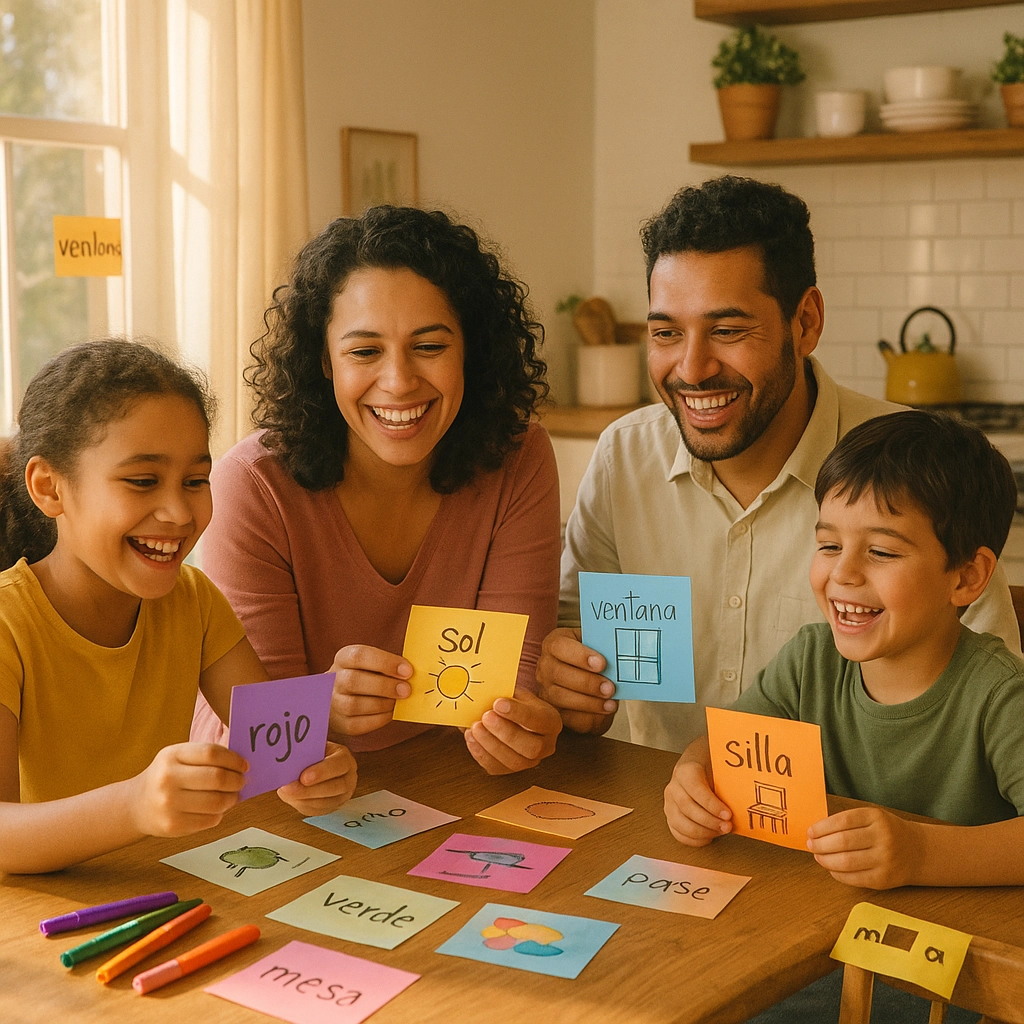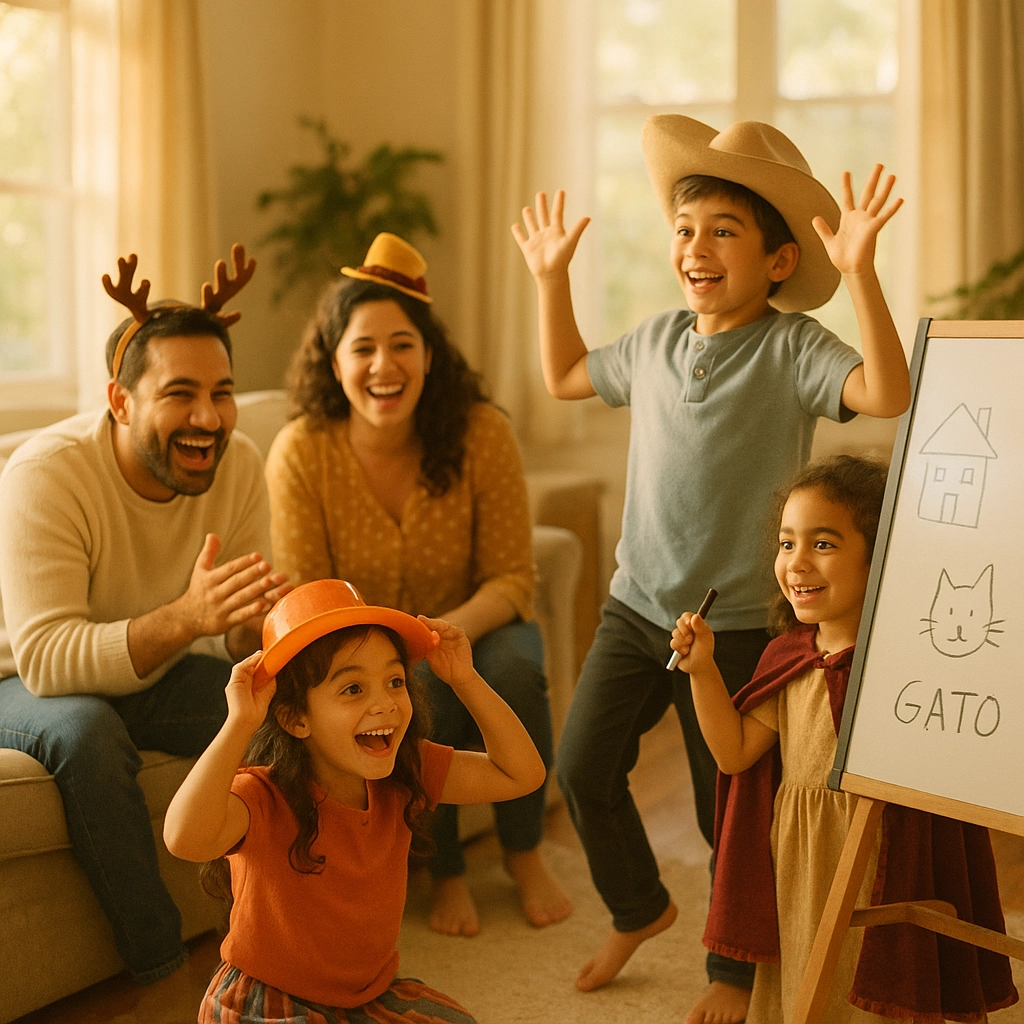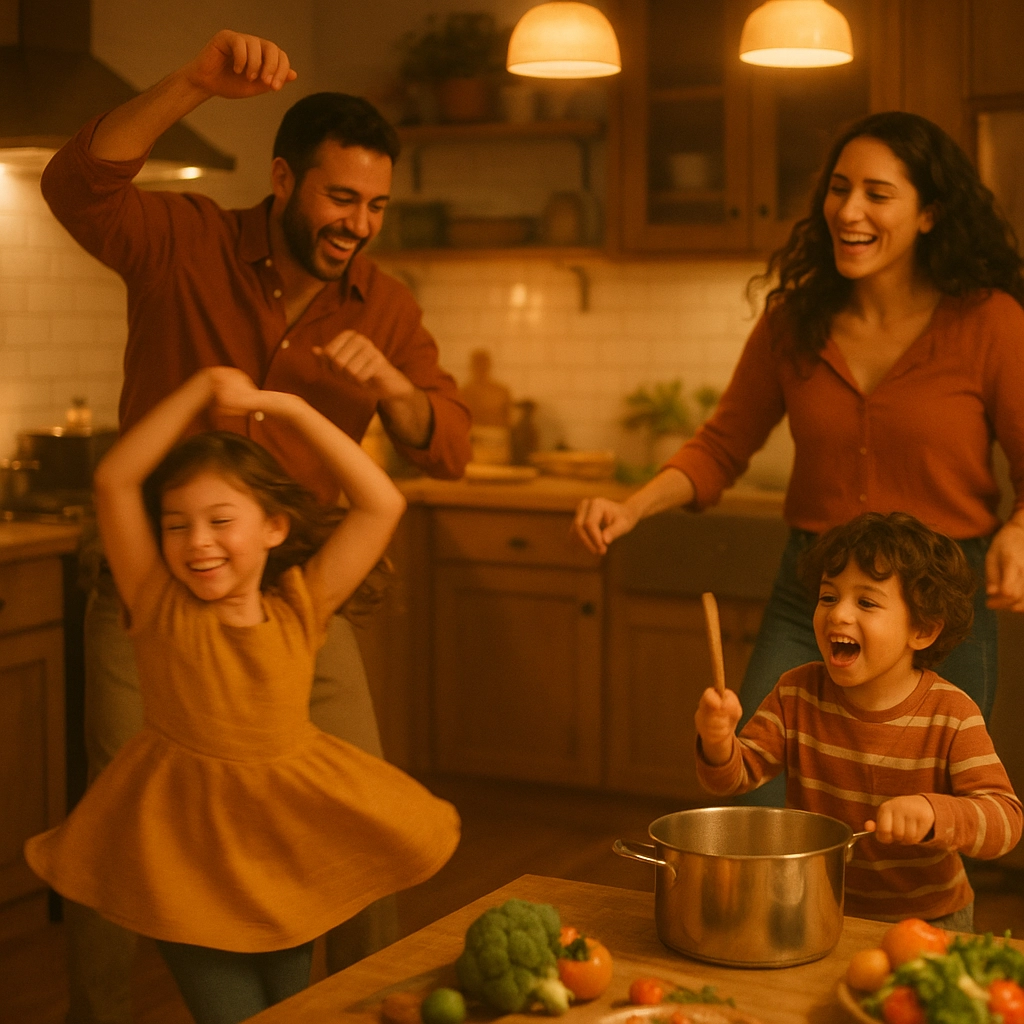Learning Spanish at home doesn’t have to look like a traditional classroom. In fact, the best learning often happens when everyone’s a little silly and a lot engaged! At Ready For Spanish, we truly believe that making language fun and social is the secret ingredient to successful learning. So, whether your family loves games, crafts, movies, or dance parties, here are creative ways to help Spanish become something your household truly lives, not just studies.
Foundation Tools: Flashcards and Visual Learning
Let’s start simple: flashcards. But don’t worry, these aren’t your old-school, vocab-drill flashcards. Make a handful together as a family—get out colorful markers and paper, and let the kids doodle pictures on one side with the Spanish word on the other. For example, a drawing of a cat with “el gato” written underneath. These work best when mixed up in quick games, memory matches, or even homemade scavenger hunts (“Find something in the house that matches this card!”).
Go a step further: label your house! Grab some sticky notes and write “la puerta” for the door, “la silla” for chairs, “la ventana” for windows—and stick them everywhere. Suddenly, your home becomes a living vocabulary lesson, and those new words will start feeling natural. 
Don’t forget about big, bold vocabulary posters for months, days, or favorite animals. Hang them where everyone can see so Spanish is always just an eye-glance away.
Interactive Games and Activities
Game night meets Spanish class—what’s not to love? Turn vocabulary practice into Bingo. DIY your own cards with Spanish words for colors, animals, or foods and call them out as everyone races to get “cinco en línea.” Want a challenge? Use only the Spanish words and see who’s got the sharpest ears!
Let’s get moving with charades. Write down verbs or activities like “bailar” (to dance), “cantar” (to sing), or “leer” (to read) on scraps of paper. Act them out and see who can guess, all in Spanish. Not only does this get everyone giggling, but it also reinforces those action words through kinesthetic memory.
Try Pictionary, too! Have someone draw “una casa” or “un árbol,” giving hints and guesses only in Spanish. Suddenly, your living room is filled with language, creativity, and laughter. 
Storytelling and Creative Expression
There’s a special kind of magic when families create stories together. Start with bilingual picture books (many have Spanish and English text side-by-side) and let the kids pick out words or repeat phrases aloud. Once a story concludes, act it out! Use simple phrases like “¡Vamos a volar!” (Let’s fly!) or “Corre rápido” (Run fast!) as you become pirates, animals, or princesses.
Take the fun further and build collaborative family stories. Sit in a circle—you start with a sentence in Spanish, the next person adds on, and so on, until you’ve spun a funny or wild adventure. The more creative, the better! Drawing accompanying pictures for your stories drives the vocab home, and kids love showing off their storytelling skills.
Encourage your children to author their own little picture books or comics using the Spanish words they’ve learned. Not only is this creative, but it also allows kids to take ownership over their learning and connects new words to real experiences.
Media and Entertainment Integration
You can sneak in tons of Spanish learning using media your family already enjoys. Pick a weekend evening for a Spanish-language movie night—pop some popcorn and watch favorites dubbed in Spanish or check out Spanish-language family films. If you’re unsure where to start, “Go Vive a Tu Manera” on Netflix is super catchy and full of age-appropriate dialogue. For younger learners, look for classic cartoons in Spanish—they’re entertaining and packed with everyday vocabulary.
Don’t forget the subtitles! Even if you watch an English movie, turn on Spanish captions to bridge your audio and reading skills. This dual exposure helps cement the meaning and pronunciation of new words.
Music is also a fantastic teacher. Search for Spanish-language kids’ songs (like “Los Pollitos Dicen”) or upbeat Latin hits the whole family can dance to. Use Alexa, Spotify, or YouTube to blast Spanish tunes while making dinner or cleaning up as a family. Before you know it, everyone will be singing along—lyrics are one of the best ways to make phrases stick. 
Daily Integration Strategies
For Spanish to really become second nature, make it a part of your daily rhythm. Place a mason jar on the kitchen counter and turn it into your family Spanish Word Jar. Each day, everyone writes down a new word or phrase they’ve learned (“la manzana,” “hace sol,” etc.) and drops it in. At the end of the week, pull out a few random slips and challenge the family to use them in complete sentences or tell mini-stories.
Use meal times as mini Spanish classes. Go around the table and have everyone share their favorite food in Spanish or ask for “el pan, por favor” instead of the bread. Try Spanish tongue twisters to build confidence and clear pronunciation—“Tres tristes tigres…” is a classic that never fails to get laughs.
If you love tech, set your phone or tablet language to Spanish together for a day. Even short periods with new vocab in real-life situations (like “Configuración” for Settings, or “Fotos” for Photos) can give context and reinforce those tricky words.
Building Family Traditions
Making Spanish part of your home culture is what really makes it stick. Start a Friday night Spanish movie tradition, or a dance party where the playlist is all salsa, reggaeton, or classic Spanish hits. Pick a theme for each month—maybe January is animals (“los animales”), February is sports (“los deportes”), and so on. Make little charts or challenges for everyone to participate in.
Mark special family occasions (birthdays, holidays, or even “just because!”) with a Spanish theme: bake a traditional Spanish treat, craft homemade decorations with Spanish words, or learn a new party game from Latin America together. The more you associate Spanish with positive, memorable moments, the more likely it is to stick—and to grow with your family.
Final Thoughts
The most important lesson? You don’t need to be fluent to help your family learn—you just need to be willing to play, laugh, and try new things together. Consistency is key, so keep Spanish in the everyday flow: one word here, one song there, and soon, your whole crew will be surprising themselves with how much they know.
Whether you love the organization of flashcards, the movement of dance parties, or the comfort of storytelling, there’s a place in your routine for Spanish. And remember, Ready For Spanish is here to support your family’s journey every step of the way—check out more fun resources or join our community at readyforspanish.com.
¡Buena suerte y mucha diversión!


Comments